#reopening cinemas theatres
Explore tagged Tumblr posts
Text


Morning walk, bit windy and grey. Wearing two jumpers each and jackets and we were still cold lol.
#a good thing though#is that our local cinema/theatre is reopening#it closed during the pandemic and we were upset#as we thought it was done for good#we used to go there all the tme#and performed there too#and now it's been restored and will be open soon#yay
4 notes
·
View notes
Text

The Art Deco DREAMLAND cinema - Margate - UK
As for the history of the cinema, the complex sits on the site of a former theatre that dates back to 1923 and was part of the sprawling Dreamland Amusement Park run by English entrepreneur, John Henry Iles. The cinema, which was designed in the early 1930s, was closed for the duration of World War II and in 1940, along with the rest of the amusement park, was briefly used to accommodate troops evacuated from Dunkirk (26 May to 4 June). The cinema reopened in 1946 and continued to show only movies until the early 1970s. In 1973 Dreamland was subdivided into a live theatre on the ground floor and an independent cinema with two smaller screens in what was originally the circle. The live theatre didn’t take off, however, and in early 1975 was turned into a bingo hall. The bingo club closed in late 2007 and the independent cinema followed suit shortly after.
Restoration work on the cinema began in 2011 when the amusement park was purchased by new owners. But, financial difficulties and a legal battle over land ownership thwarted the project. Eventually, work on the building’s exterior was completed in 2016 after the site was compulsorily purchased by Thanet District Council. Restoration of the interior is ongoing but progress appears to be slow and future plans for this iconic Margate landmark are unclear.
36 notes
·
View notes
Text

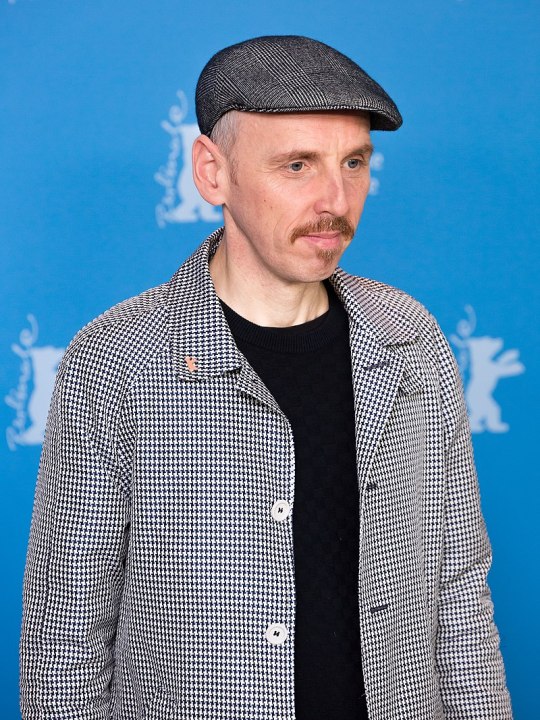

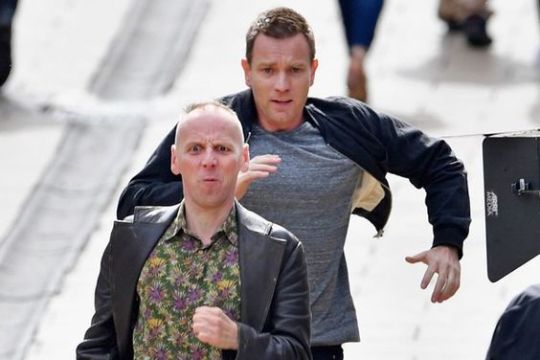
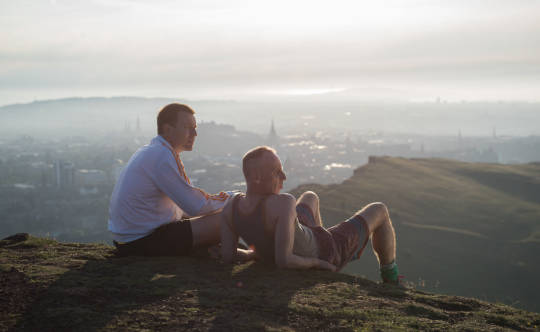
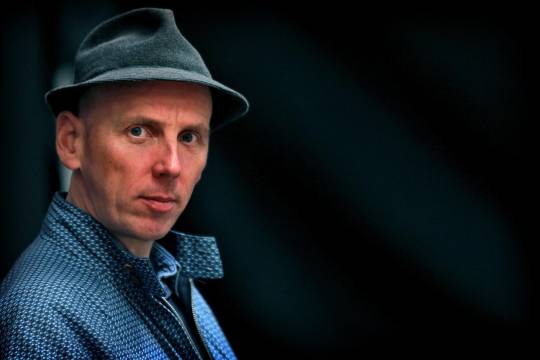
Happy Birthday Scottish actor Ewen Bremner, born January 23rd 1972 in Edinburgh.
Bremner has worked with many of the most respected directors in world cinema, including Danny Boyle, Mike Leigh, Ridley Scott, Joon-Ho Bong, Werner Herzog and Woody Allen. Hen has established himself by creating unique characters in critically acclaimed films, as well as going toe to toe with many of Hollywood's biggest stars.
Ewen had worked widely in theatre, television, and film for years before being cast in his breakout role in Trainspotting, by Oscar-winning director Danny Boyle. He was the first to be cast in the role of Mark Renton in Edinburgh's Traverse Theatre production but lost out to Ewan McGregor in the film version, instead he was handed the role of Spud Murphy and earned screen immortality with his character's infamous "speed fuelled" job interview scene.
Prior to Trainspotting, Bremner gave a striking performance in Mike Leigh's Naked, fellow Scot Susan Vidler played his girlfriend Maggie in this excellent film.
In 1999, Bremner received critical acclaim for his portrayal of a schizophrenic man living with his dysfunctional family in Harmony Korine's Julien, Donkey-Boy. Filmed strictly in accordance with the ultra-realist tenants of Lars Von Trier's Dogma 95 movement and starring opposite Werner Herzog, Bremner played Julien its eponymous hero, requiring him to assume an American accent. He then worked with director Michael Bay in his high-profile 2001 war film Pearl Harbor, proving his versatility once again by portraying the role of a wholeheartedly patriotic American soldier fighting in WWII. The following year, he stepped back into fatigues for a supporting role in Ridley Scott's Black Hawk Down, while rounding out the next several years with roles in high-profile Hollywood releases such as The Rundown, Disney's Around the World in 80 Days), AVP: Alien vs. Predator, Woody Allen's Match Point, the comedy Death at a Funeral directed by Frank Oz, and Fool's Gold starring Matthew McConaughey and Kate Hudson.
This past few of years proved to be a busy when Bremner was invited to join the DC Universe in the Zack Snyder-produced feature Wonder Woman, directed by Patty Jenkins, co-starring Gal Gadot and Chris Pine. Ewen also reprised his unforgettable role as Spud in the highly-anticipated sequel to Danny Boyle's cult classic, T2: Trainspotting
Bremner appeared in the TNT Drama Series Will with Shekhar Kapur. The series told the story of the lost years of young William Shakespeare after his arrival to London in 1589 but only lasted one season. Other notable film credits include Woody Allen's You Will Meet a Tall Dark Stranger, Perfect Sense starring again alongside Ewan McGregor, Great Expectations, Jack the Giant Slayer, and Snowpiercer starring alongside Chris Evans and Tilda Swinton. Further credits include Exodus: Gods and Kings, Wide Open Spaces, Mojo, Mediator, Faintheart, Hallam Foe, Sixteen Years of Alcohol, and Snatch.
In television, Ewen has worked on many acclaimed productions including David Hare's Worriker trilogy starring Bill Nighy for BBC, Jimmy McGovern's Moving On and also his Australian mini-series Banished, Strike Back for Sky TV, Dominic Savage's Dive, the Dylan Thomas biopic, A Poet In New York and the adaptation of Day of the Triffids for the BBC. Other noteworthy series appearances include portraying legendary surrealist Salvador Dali in the U.K. television drama Surrealissimo: The Trial of Salvador Dali, and a guest spot on the successful NBC series, My Name is Earl, not to forget an early appearance in Taggart way back in 1990.
Latley Ewen has been one of a number of Scottish actors who are backing a campaign to reopen the Film House cinema in Edinburgh, he has a couple of projects on the go just now, Bluefish, which takes us around the globe to tell stories of people trying to break out of their bubbles of isolation, which I take to mean the Covid pandemic, he also has a film on the go called Roo, but there is nothing to report on that just now.
29 notes
·
View notes
Text


66 Drive-In Theatre is a historic drive-in theater along U.S. Route 66 in Carthage, Missouri which opened on September 22, 1949. The cinema was closed in 1985, but was renovated and reopened in 1998.
#66 Drive-In Theatre#opened#Carthage#Missouri#22 September 1949#travel#original photography#vacation#tourist attraction#landmark#cityscape#USA#summer 2014#US history#Route 66 Roadside Attraction#neon sign#architecture#75th anniversary#culture
3 notes
·
View notes
Text
Eddie Muller talks with Robert Loerzel, WBEZ Chicago about NOIR CITY Chicago, August 6-12 at the Music Box Theatre.
Passes, tickets, and schedule for NOIR CITY Chicago.
#film noir#eddie muller#noir city#film noir foundation#noir alley#film restoration#film noir festival#alan k rode#noir city chicago#wbez
6 notes
·
View notes
Text

February 6, 2021
The Seven Gables Theatre began life as an American Legion dance hall in 1925, designed by Swedish-born architect Eric Carl Rising (1892-1987). In 1968, Randy Finley bought the Movie House (currently the Grand Illusion Cinema), which he and his partners converted from a dentist’s office and opened in 1970. This led to him eventually buying 15 more theaters, including the Seven Gables Theatre in 1974, which opened on December 10, 1976. These theaters (minus the Movie House) eventually became part of the Seven Gables Corp.
Landmark Theaters acquired the chain in 1989. Sadly, out of all the theaters that existed when I moved to Seattle, only the Crest still operates as a Landmark theater (at least until COVID closed all the theaters in our state).
The first to go was the Neptune, bought out by STG in 2011. Then the Metro, initially turned into Sundance Cinemas in 2012 and then acquired by AMC (who kept the interior and the 21+ rules the same but changed the menus). Next to go was the Egyptian Theatre in 2013, which SIFF reopened in time for the 40th Seattle International Film Festival in 2014 and ran as its second year-round cinema (third if you count the Film Center, though that theater is more of a weekend venue). The Varsity’s future was up-in-the-air for years, until Far Away Entertainment purchased it in 2015 (they also run the Admiral in West Seattle). Then we lost the Harvard Exit in 2015 (see my post about it here), currently a Mexican Embassy. Last to go were the Guild 45th and the Seven Gables.
#Seven Gables Theatre#movies#theaters#Landmark Theaters#1920s#old seattle#memories#fire#vanished seattle#old buildings#U District#2021
15 notes
·
View notes
Text
Lost Chicago Building 6 - The Granada Theater
By Roger Jones, August 2023

The Granada at night
I only saw a movie at the Granada Theater once, in the late 1970s; I believe the offering was Murder by Death. Nonetheless, I always marveled at the movie palace's facade every time the el train passed the Loyola stop on Chicago's north side.

Granada Theater from the CTA Loyola platform, found photograph, Flickr, probably 1970s

Granada marquee, c. 1930

The grand lobby in 1929
Historical details:
Opened: Tuesday, September 21, 1926
Status: Closed/Demolished Sunday, September 30, 1990
Style: Spanish Baroque
Seats: 3,443
The Granada Theater was a 3,400–seat movie palace located at 6427-41 North Sheridan Road, in the Rogers Park neighborhood of Chicago and adjacent to Loyola University. Constructed in 1926 for the Marks Brothers, major theatre operators in the U.S., Edward E. Eichenbaum was the principal designer for the architectural firm of Levy & Klein. Eichenbaum also designed the Marbro, Regal, and Century theaters in Chicago.
The Marks Brothers operated the theatre until 1934, when Balaban and Katz purchased the property. That firm and its successors—United Paramount Theatres, ABC Great States Theatres and Plitt Theatres—operated the facility until approximately 1978. From then until the mid-eighties, it was used sporadically for rock concerts and presented midnight showings of The Rocky Horror Picture Show for several years.
Despite all attempts to save the theater, Senior Life Styles Corporation purchased the property and demolished it in 1989-90 for a planned apartment/commercial structure.
The new 16–story apartment tower and shopping arcade constructed in 1991 was named "Granada Center.” Loyola University eventually purchased the structure and transformed it into 12 floors of student apartments over a base containing parking, retail and university offices.
Source: Wikipedia
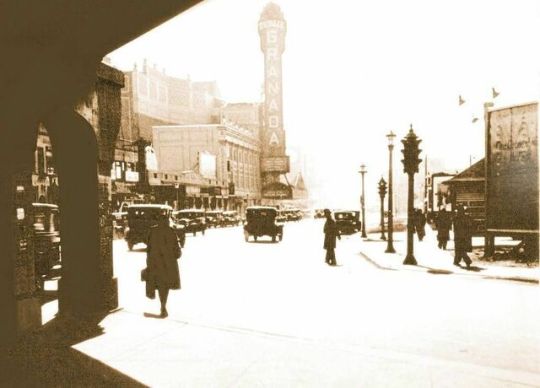
1920s photo, credit John G. Chuckman Collection
Following are scanned pages from The Chicago Movie Palaces of Balaban and Katz, by David Balaban:

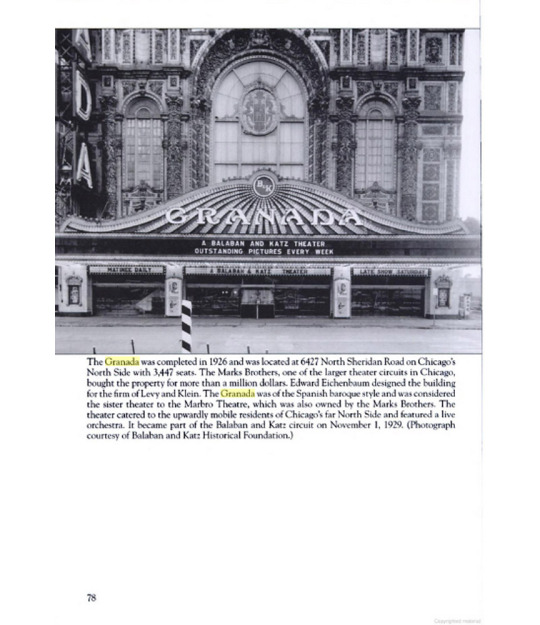


Granada Theater under construction
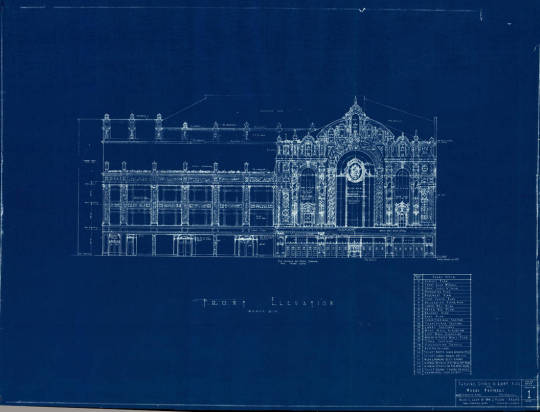
Architectural rendering, front elevation (no date)

Advertisement (no date)
Thanks to Cinema Treasures for the following details:
Built in 1926 for the Marks Brothers circuit, this was one of the largest movie palaces on Chicago’s Far North Side, located in Rogers Park. The Granada Theatre was opened September 18, 1926 with a Jack Haskell stage show “Eastern Nights” and on the screen Belle Bennett in “The Lilly”. The Wurlitzer 4 manual 20 rank theatre organ was opened by organist Alfred F. Brown The proscenium was 60ft wide and the stage 32ft deep. Seating was provided for 3,448, with 1,833 in the orchestra level and 1,615 seats in the balcony.
On November 18, 1932, the theatre was acquired by the Publix/Balaban & Katz chain and it was briefly closed, reopening on July 29, 1933 with John Barrymore in “Reunion In Vienna” & Laurel & Hardy in “Me and My Pal”. The Granada Theatre was originally designed by Edward Eichenbaum (of the firm of Levy & Klein) for both live stage shows and movies, but by the 1940’s, was only showing films. On November 19, 1975 the World Premiere of Jack Nicholson in “One Flew Over the Cuckoo’s Nest” was held at the Granada Theatre, with Jack Nicholson & Louise Fletcher appearing ‘in person’. It remained open as a movie theatre, operated by Plitt Theatres until the late-1970’s.
Information from the HABS Report on the Granada:
The report goes on to say that the primary reasons for the Granada’s historic significance include:
its size, as it was one of the three largest movie theatres ever built in Chicago, the other two being the Uptown and the Chicago theatres; its elaborate design, often cited as the most ornate in the city; its place as the flagship of the Marks Brothers empire, who were second only to Balaban and Katz in the construction and operation of opulent movie palaces; and its association with architect Edward Eichenbaum.
Perhaps the most heartbreaking element of the HABS report is one of its closing statements: “The Granada had survived in essentially unaltered condition until the past two years (1988-89), when it was left unattended and the weather and vandalism were allowed to proceed unchecked.” This was a demolition that could have been avoided.
The HABS report included several dozen photos of the interior and exterior of the Granada Theatre, taken shortly before demolition. While it is depressing to see the damage the theatre suffered in its final two years, especially during a time when movie palaces across the country were being renovated to the benefit of communities large and small, these photos do show in great detail the artistry of Edward Eichenbaum.
Source: Compass Rose Cultural Crossroads
In addition:
...the Granada was still in remarkably good shape as recently as 1987. While it was allowed to deteriorate after that, eyewitnesses to the demolition mourn the fact that there was little wrong with the theatre structurally, that it could, in fact, have been saved.
Despite efforts to landmark the theatre or get it reopened, the Granada’s fate was sealed. Much of the terra cotta of the facade was stripped and sold off, as were many of the interior decorative elements. One of the large chandeliers from the lobby was salvaged and now hangs in the Riviera Theatre. Another, smaller, chandelier hangs in the Music Box on Southport.
Source: Compass Rose Cultural Crossroads
Photographs from the HABS Report, Library of Congress:

VIEW OF BLOCK FROM NORTHWEST LOOKING SOUTHEAST, 1980s, N. Sheridan Road

MAIN LOBBY CEILING FROM GROUND LEVEL
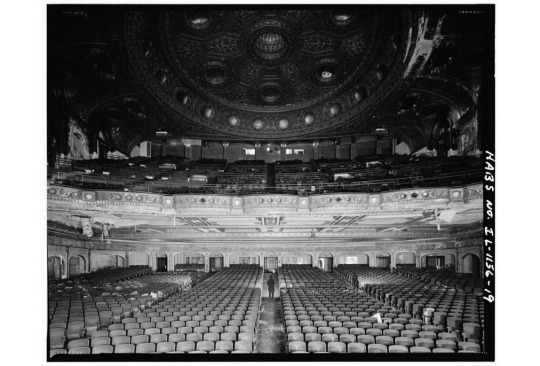
HORIZONTAL VIEW FROM STAGE LOOKING SOUTH

VIEW OF CEILING FROM STAGE

ALCOVE 2ND FLOOR LOBBY WALKWAY, during demolition

LOOKING EAST, VIEW OF COMMERCIAL OFFICE SECTION, NORTH PORTION OF THEATER COMPLEX
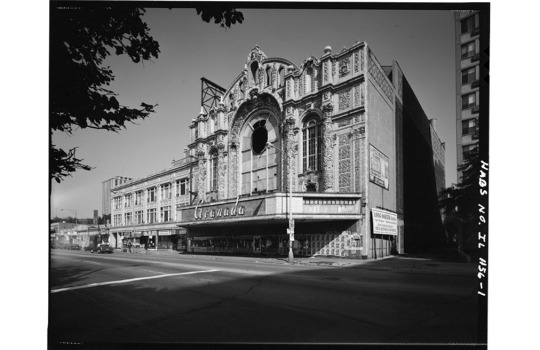
VIEW OF BLOCK FROM SOUTHWEST LOOKING NORTHWEST - during demolition

Admission ticket
Photos during the theater's destruction can be viewed in the Flickr set by Genial23 Ruined and abandoned.

A final view: Granada Theater, 1920s - Cinema Treasures, photo by Chicago Architectural Photographing Company
An incredibly detailed description of the building can be found on Historic Structures.
Today:

"Completed in 1991, Granada Center hosts residential apartments, a parking garage, office space for Loyola University, and several store fronts. The Center was built to help aid the growth and development of the Rogers Park neighborhood, as well as to provide more space for Loyola University." Loyola University Chicago Digital Special Collections
Finally, if you're interested in fragments, view the Urban Remains site for some interesting pieces of the Granada Theater.
#Granada Theater#Chicago#movie palace#Balaban and Katz#architecture#terra cotta#Edward E. Eichenbaum#Marks Brothers#cinema#Rogers Park#lost buildings
6 notes
·
View notes
Text
An Award-Winning New Era for Hogg Memorial Auditorium

Campus Events+Entertainment’s Showtime Committee at the “Barbie” movie screening in November 2023
Hogg Memorial Auditorium’s transformation into a lively hub of student activity and destination for live music, performances and events has not gone unnoticed since reopening one year ago. The 91-year-old facility has garnered eight accolades from local, higher education and industry organizations for preserving its architectural and cultural heritage while bringing it into the 21st century.
But what’s happening with students inside the reimagined space is probably the most validating recognition. Longhorns are celebrating the new cutting-edge technology that enhances the audience and performer experience while expanding opportunities for hands-on learning that translates into meaningful careers and lives.
Students were the catalyst for initiating the renovation project in 2011 and worked with the Division of Student Affairs’ leadership to secure funding and develop a plan. Updates include state-of-the-art audio/visual and lighting systems, and stage and production equipment, which offer students a space to develop their skills in live performing arts and event planning.

Student group performance at the Hogg Memorial Auditorium Showcase in November 2023
“I am very fortunate that I get to learn with this technology. We have access to state-of-the-art equipment that you would not easily find, especially at a venue for students. This unique technology motivates us to learn more about our crafts,” shared Joy Williams, a University Unions' student employee who works as a lighting operator, board designer, technician, and stagehand and a sophomore theatre and dance major from Pharr, Texas.

Joy Williams in the renovated Hogg Memorial Auditorium production booth testing lighting designs.
For Williams, who is pursuing a career as a lighting operator, working with the auditorium's production team allows her to help produce premier University events. Williams operated the lighting during President Jay Hartzell’s State of the University address on Sept. 18, and noted how working with professional event planners is helping improve her communication skills.
“I am gaining a lot of skills that can transfer to my future career. I had never truly had the chance to interact with clients before this, so this job has given me the confidence to consult and deliver with different clients and their needs,” she added.

Campus Events+Entertainment Showtime Committee’s “Asteroid City” screening in November 2023
Academy-award winning director Wes Anderson is proof of the auditorium’s transformative atmosphere. He was a student projectionist with University Unions in the early 90s at UT Austin. Anderson recognized the auditorium’s impact on his career trajectory in a special video message played before the screening of his Asteroid City movie at the venue: “I watched a lot of movies in this room, and it’s one of my favorite cinemas in the world.”
Since reopening in October 2023, 65 events have taken place at the auditorium, with 27 of those events hosted by student organizations. Campus Events+Entertainment, the largest student programming organization on campus, hosted the annual Texas Revue, the University’s student talent show, and screened the Barbie! and Asteroid City movies.
“We are able to do much more with the new technology as well as offer an increased quality of events. It feels like a UT space – it enhances the student experience,” noted Thien Nguyen, the Showtime Committee chair and a junior management information systems major from Houston.

Gary Clark Jr. performs at Hogg Memorial Auditorium in October 2023
Keeping with the auditorium’s legacy dating back to 1933, some big names have taken the stage in the past year, especially during the grand reopening celebrations. The first event held was a visit from U.S. Secretary of State Antony Blinken, and blues-rock musician and Austin-native Gary Clark, Jr. headlined the first concert there.
Events of this scale show what is now possible following the $27.8 million renovation. University Unions collaborated with partners across campus, resulting in these recognitions that celebrate the innovative approach to preservation and energy-efficient design – ultimately putting students first.
Hogg Memorial Auditorium is the first renovated building at UT Austin to earn the United States Green Building Council’s Platinum certification for Leadership in Energy and Environmental Design (LEED).
American School & University, Bronze Citation, Educational Interiors Showcase 2024
Associated General Contractors of Texas Building Branch (AGC-TBB) Outstanding Construction Awards for General Contractor, Historic Renovations, 2023
Associated General Contractors of Texas Building Branch (AGC-TBB) Outstanding Construction Award for Historical Renovations-Statewide, 2024
Austin Green Award (2024)
Learning By Design Architectural & Interior Design Awards of Excellence, Outstanding Renovation Project 2024
Preservation Award for Restoration, Preservation Austin Merit Awards 2024
Spaces4Learning, Grand Prize, Education Design Showcase, 2024
If you have not experienced the wonders of the renovated auditorium, make plans to attend a performance, which includes two holiday concerts featured on this list of upcoming events.
#division of student affairs#the university of texas at austin#university unions#hogg memorial auditorium#ut austin
0 notes
Text


The Mayfield Theatre Building
12300 Mayfield Road
Cleveland, OH
The Mayfield Theater, 12300 Mayfield Road, Cleveland, OH, —a.k.a., the Mayfield Art Theatre, the Old Mayfield Theater, and the New Mayfield Repertory Cinema—opened in 1923. The first of the Mayfield Theater’s many lives began that year, when Michele Mastandrea, an Italian immigrant, built the two-story brick building with a theater on the first floor and a large apartment on the second. Mastandrea had previously operated a dry goods store on that same parcel. Before that he worked as a shoe salesman in a shop on the current site of Maxi’s Bistro. Mastandrea and his wife Christina lived in a small house behind the theater (fronting Fairview Court) until they moved to the new building’s second floor quarters in 1929. They operated the theater and remained in the spacious eight-room apartment until their deaths in 1955 and 1958, respectively.
Michele Mastandrea died in August 1955 and the theater closed. In January 1959, it reopened as the Mayfield Art Theater, part of a national chain of art movie houses. Veteran managers Jack Silverthorne and Jack Lewis upgraded the marquee, interior, and projection equipment, and installed a new CinemaScope (super-wide) screen. The two Jacks showed first-run foreign films, as well as domestic comedies, dramas, and documentaries. Rod R. Mastandrea, a Cleveland attorney and son of Michele Mastandrea, assumed control in September 1959, a tenure that ended that December when the curtain came down again, save for a very brief attempt at live theater in 1961.
The year 1968 saw the space’s third reincarnation called the Old Mayfield, a silent movie house. Blood and Sand with Rudolph Valentino kicked things off on October 3, 1968. The Old Mayfield's emergence wasn't driven by movie men. Instead, the rescuers were Sam Guarino, owner of Guarino’s restaurant, and Hank Schulie of the Golden Bowl. The two restaurateurs cleaned the place up, hired a pianist, and installed a bar in a corner of the lobby, but the theater closed in October 1969. It reopened briefly in January 1970 with a spate of Marx Brothers and W.C. Fields movies, but lapsed back into sleep by late spring.
After four years, the theater was resurrected for the last time by an English and drama professor and cinephile named Sheldon Wigod. Dubbing his new movie house the New Mayfield Repertory Cinema, he stuck with classic movies but interspersed them with foreign films—from Flynn to Fellini. Wigod brought a personal—and personable—touch to the business, introducing each film prior to its showing. It was during Wigod’s tenure that the building was designated a Cleveland Landmark. Wigod’s labor of love did better than most; the New Mayfield Repertory Cinema stayed awake until 1985 but has been vacant ever since. However, it did receive a spot in the National Register of Historic Places on June 14, 2013. The Mayfield Theatre Building, after damage by Hurricane Sandy, is now abandoned looking from the outside, but the owner is cleaning up on the inside.
1 note
·
View note
Text

Bedminster Hippodrome Theatre & Cinema Bristol UK
The Bedminster Hippodrome Theatre (Also known as the Stoll Picture Theatre) was situated on East Street, Bedminster, Bristol and was designed for Walter De Frece by the well known Theatre Architect Bertie Crewe, with Decorations and Furnishings by A. R. Dean Ltd., of Birmingham. The Theatre opened on Monday the 5th of August 1911 and was fitted out with the most up-to-date projection, stage and performance facilities available at that time.
However, the Theatre was bombed in the blitz during the Second World War on the 3rd of January 1941, which destroyed the Theatre's roof and seriously damaged the Auditorium. Unfortunately the Theatre was never repaired or reopened and it was eventually demolished after the war, a sad loss to the city..
5 notes
·
View notes
Text
Damage Control
[Easy reading version on Toyhou.se]
(Note: This drabble is preceded by Eye of the Storm)
After a week of relentless downpour, the storm surrounding Vernrot Harbour had subsided.
It took some time before residents felt that it was safe to leave their hives once again, fearing the wind and the rain could pick back up again at any time, but businesses were required to reopen and supplies needed to be replenished. And, most importantly, buildings needed to be repaired. The architecture of Vernrot Harbour favoured brick and stone for its walls, but the tiled roofs and single-glazed glass windows were much more vulnerable to the elements.
The library was leaking more than ever. The roof above the Vernrot Pub had collapsed. Two of the theatres at the Cinema were destroyed. The clinic’s front windows had shattered. Many businesses within town had flooded, and Lernie lost a whole season’s worth of stock, clothes that he had carefully tailored now covered in muck and soaked to the very last fibre.
Power had been restored to the town, but telecommunication wires had been badly damaged. It would take days before workers could arrive to restore the system. Repair drones would also be in high demand, but the town’s isolated location and reputation made it difficult for aid to arrive quickly. When Fleet officials had mysteriously disappeared in the past, Empire-aligned businesses were hesitant to send staff into town.
At the very least, the residents were self-sufficient. Neighbours would work together to sweep flood waters out of their hives and set up temporary tarpaulin sheets to cover up holes in roofs and broken windows. It was all they could do until the next shipment of supplies were due to arrive in town.
All merchant ships and commercial freight services had been suspended due to inclement weather, and the train system was facing similar issues. Any ships that would have stopped in Vernrot Harbour were forced to continue on to the next stop of their shipping route, and it would be anywhere between a couple weeks to an entire perigee before they would return. For a town that relies so heavily on imports, the long-term effects could be disastrous.
The fishing industry was booming, and the weather allowed for fisherman and trawlers alike to resume business. The town would not starve, but one can only ration out their other supplies for so long. Vegetables will wilt, red meat will rot, stocks of flour and rice and other staple goods will eventually run dry. The Quartermaster, the town’s general store, was seeing unprecedented amounts of empty shelves as people had scrambled to grab as many supplies as possible.
The owner of the store could only shake their head, and tell customers to wait for the next shipment, whenever that may be. They hoped it was soon.
Lusien had expected as such, and opted to avoid trying to find anything into town until the initial panic passed. That, and he was also facing his own problems due to the storm.
While the lighthouse at the top of the hill emerged from the storm unscathed, still lit using what remained of the oil supply, Lusien’s shed did not.
Large portions of the roof had been torn clear off by the gale force winds, and while the sturdy foundations of the walls prevented its contents from being tossed out to sea, the torrential downpour wrecked every single painting he had stored inside. Power tools had also been knocked off the shelves and smashed, and some of his other building equipment was not in its usual place, but while those were important to him now, they could be replaced. The canvases could not.
His heart had sunk when he saw the ruined works of art, but there was nothing that could be done but to throw them out. For now, he had to focus on salvaging what he could.
Tarpaulin sheets were a must-have for any Vernrot resident’s emergency preparation kits, as one may never know when a storm could damage their hive. Lusien’s sheets were completely waterlogged due to being stored in the shed, but they were still usable. There were some spare wooden planks he could use to secure them to what remained of the roof, which should hopefully hold until the next shipment of timber arrived in town.
If he could get his hands on the first shipment, that is. Undoubtedly many residents will be putting in orders to fix their hives and businesses that had been wrecked by the storm. Lusien could place an order in for more wood now, but it didn’t feel right to him to focus on his shed when that space on the freight train could instead hold much more important cargo.
Just the tarp on its own will have to suffice for the foreseeable future, just as how he’ll have to live rationing out everything else until trade shipments resume.
Lusien first set up a ladder against the outside wall, then collected the tools he’d need. Fetch moduses were a godsend, given how he didn’t have to worry about how to carry a tarp, multiple planks, and a hammer and nails all at once. As he was rifling through the boxes on the shelf to look for the right-sized nails, he saw something out of the corner of his eye. Squeezed between the shelf and the corner was a cat, shivering from the rain. But he knew better than to try and coax it from its hiding spot, as his psiionics made it perfectly clear it was nothing more than an apparition.
He would also have to investigate all the anomalies of the town to ensure they weren’t causing trouble, it seems.
Leaving the apparition to its own devices, he exited the shed and scaled the ladder. There was just enough framework and tiles remaining for Lusien to have spots to safely stand while he unfurled the tarp and began to drape it across the roof. The lack of wind was very welcoming, as it made the sheets less unruly to lay out, and allowed him to temporarily hold it in place with planks without needing to nail them down first. He worked methodically, making sure the tarp was flat and could be pulled as tightly as possible to prevent further leakage.
One sheet was enough to cover half the roof, but as he moved around to the other side to lay out the second sheet, he discovered that he was short a couple planks to keep it in place. He looked back at the opposite side, humming in thought as he attempted to figure out where he could move planks around to ensure the best coverage.
In his concentration, he failed to notice someone else approaching, humming the exact same tune.
Lusien stepped carefully around the roof, spying the planks he could spread out further to better utilise the space. The rainfall was light, but the tarpaulin sheets were already soaked through and slippery, one wrong move and he could-
“Hello! Lusien.”
One moment, Lusien had turned around too quickly, confused by the voice breaking him out of his concentration. His shoe slid just a bit too much, and he was too close to the edge of the roof-
The next moment, he was lying in a bed of tentacles, staring up at the same roof where he had just been standing.
Huh?
“Ah! You’re heavier than I thought you’d be. But. Lucky! I saw you slip. And then. I acted without thinking! Haha.”
Lusien looked around in confusion, trying to find the source of the voice but only seeing masses of black and glowing purple spots. Then he felt all the tentacles shift around him, manoeuvring him back onto his feet, and then retract back into the body of his saviour.
Vallis was now standing right next to him, clenching and unclenching his fists as he accustomed himself to the feeling of troll limbs.
“Oh. Thank you.” The blueblood acknowledged with a nod.
The horrorterror hybrid grinned, flashing multiple rows of teeth.
“Yes! Well. I haven’t used that many tentacles in this form for a while. But. It would be worse if you had hit the ground. Then. I would be without any friends! To talk to. Haha.” He replied, chipper as ever. It would have made Lusien wonder if he had gotten over the previous shock of losing Zanzul, had he not noticed the air of melancholy hanging around Vallis. “So. I wanted to say hello! And. What are you doing? The town feels chaotic. Yet. You were not around.”
Lusien frowned slightly, recognising that Vallis was correct to assume that he should be out in the town.
“The shed needed fixing first. Then I’ll assist the town.”
“Yes. Of course! There is a saying. Put on an oxygen mask first before you assist others! Otherwise. You might both die! From carbon monoxide poisoning. Haha.” The purpleblood laughed, oblivious to the morbid comparison.
Lusien enjoyed Vallis’ company, as much as one ever could, but occasionally he said things that made the blueblood uncomfortable. That was one of them. Still, he tried to make it not too evident on his face, and looked over towards the ladder. It had been knocked over when Vallis caught him, so he moved to rest it back against the shed.
It was unlikely that the other troll would leave so easily, which gave Lusien an idea. There was no way that Vallis had any experience in woodworking or disaster relief, but he did have more than enough sets of limbs handy.
“Mhm. Can you help? I’ll need someone to help move the planks. You can stay on the ground and use your tentacles, if you want.” He glanced back over at Vallis. It was a rarity for Lusien to ever ask for help so openly.
Vallis looked surprised for that very reason, but then nodded.
“I can! Tell me what you need me to do. And. I can assist!” He beamed, happy that he could stick around for some time longer.
---
Vallis hummed as he kicked his legs back and forth, having opted to sit on the edge of the roof to keep Lusien company. The blueblood didn’t mind, being more focused on hammering down the planks at the roof ridge. He was careful not to chew on the nails he kept in his mouth as he worked, which also doubled as a substitute for the cigarettes he was still rationing out. Occasionally he would ask Vallis to assist with moving planks around or helping hold the tarp in place, which the hybrid complied with happily.
He wasn’t providing a large amount of help in the long run, but Lusien still appreciated that the process was speeding up slightly with that extra assistance. That, and he had grown quite accustomed to the pleasant sound of Vallis’ humming, which seemed to persist even when the other troll spoke.
“Hm. Perhaps if Zanzul was here. She could grow more wood to use. Then. We wouldn’t need to ration so much!” He ran his hand down the length of wood as he spoke, and Lusien felt that air of melancholy return once again. Vallis truly did miss his friend.
“Maybe,” Lusien replied quietly, pulling a nail out of his mouth to finish securing another plank. “Can you still not hear them?”
He recalled what Vallis had said that night when he showed up on the lighthouse keeper’s doorstep, distressed and half-transformed.
Vallis shook his head, and gazed up at the slice of the moon barely visible amongst the rainclouds.
“No. I cannot. I’m afraid. But. I think The Slumbering Ones quieting down is a good sign. What happened has happened. And. Won’t happen a second time.” His tone was somewhat distant, detached. “Though. I wonder. If we can hear of their disappearance. Can they hear us? Out beyond the stars?”
Lusien’s ears perked up slightly, genuinely curious. He had not thought of that.
“Zanzul had once mentioned The Furthest Ring. It was dangerous, she said. Since. Well. There are no bodies within the ring. Only concepts. Ideas. Someone with no understanding of the world could be swallowed up forever. That’s very frightening! Isn’t it? But. She didn’t say you could never return home.”
Vallis closed his eyes, and the glow spots under his eyes began to light up rhythmically.
“Maybe. I can try and sing them a way back. If my voice could reach that far. Then. They can follow the echoes home.” He hummed.
It sounded nonsensical, as if such a thing were possible surely both Varzims would be back by now. But Lusien saw the hopefulness in Vallis’ expression, and he wanted to believe in it. He nods.
“You can try. And, you can tell Thrixe and Zanzul they’re always welcome here. I’ll make them something, when they next visit.” Lusien nodded, and smiled.
Soon, Vallis’ singing filled the air, harmonic notes in a language unintelligible to trollkind yet still identifiable as an aria of hope and longing for a friend to return. It may have been unwise for Lusien to keep listening as he worked, but if any emotion were to trap him in a perpetual loop, he would prefer it to be this.
#drabble#lusien avalon#vallis reyleh#from the maker of Oh No These Two Guys Are Really Sad now bring you: Two Guys Fix A Shed#i like how every time vallis and lucy interact its a mixture of 'aw theyre friends now' and 'hm this might be a bit worrying' lmao
1 note
·
View note
Text




On May 18th 1939 the Cosmo cinema in Rose Street, Glasgow opened its doors for the first time.
The Cosmo cinema was the first purpose-built ‘art-house’ cinema to open outside of London. Designed as the flagship for the Singleton chain (which also included the Mecca, Riddrie and Kingsway cinemas in Glasgow), this 850-seater was prolific cinema architect James McKissack’s final design before his death.
The foyer was originally double-height, with twin staircases leading to the balcony. Payboxes were situated to both the left and right, between the two sets of entrance doors. A small kiosk was situated at the back of the foyer, which was panelled in walnut. A large globe, set above the main rear stalls entrance, reinforced the international nature of the films being shown. A large cloakroom and luxurious ladies powder room were also provided.The cinema was advertised under the slogan 'Entertainment for the Discriminating’, with the cartoon character of the bowler-hatted Mr Cosmo, a familiar sight in newpaper advertisments of the time.
In 1968, the foyer was dramatically altered to become single height, and a new bar was incorporated over it, in a style that matched the restt of the interior decoration very well. Part of one of the twin staircases was also removed at this point.
In 1973, the Cosmo was bought by the Scottish Film Council, who undertook major structural alterations. The auditorium was split, to form a large single screen upstairs, with the balcony extended fully forward and a new proscenium constructed.
Much of the original decoration was retained, including the central light feature nicknamed Mr Cosmo’s bowler hat. Renamed the Glasgow Film Theatre - or as it’s better known - the GFT - the building reopened to the public in May 1974. At this time, the stalls space was used as an conference and exhibition area. In 1986 the GFT became independent of the SFC, and in 1988, the building was B Listed by Historic Scotland.
In 1988, part of the original stalls space was converted into a second screen, and the rest into a cafe-bar, which in a nod to the cinemas past was named Cafe Cosmo.
Despite strong competition from the nearby UGC / Cineworld , the GFT is thriving, and is without doubt the most pleasant place in Glasgow to go see a film on the big screen. I must admit to only having visited once, but was impressed by it’s ambience and the feel of the place.
The GFT may not be of a great age but it is now the oldest active cinema in the city.
12 notes
·
View notes
Text


66 Drive-In Theatre is a historic drive-in theater along U.S. Route 66 in Carthage, Missouri which opened on September 22, 1949. The cinema was closed in 1985, but was renovated and reopened in 1998.
#66 Drive-In Theatre#opened#Carthage#Missouri#22 September 1949#travel#original photography#vacation#tourist attraction#landmark#cityscape#USA#summer 2014#US history#Route 66 Roadside Attraction#neon sign
2 notes
·
View notes
Text
NATO EVP & General Counsel Jackie Brenneman Exits, Exec Key In Reopening Cinemas – Deadline
EXCLUSIVE: The National Association of Theatre Owners’ EVP & General Counsel Jackie Brenneman has departed, several sources inform Deadline. This became effective Friday. Brenneman was also one of the founders, and the President of NATO sister org, The Cinema Foundation. The news follows in the wake of the new administration at NATO led by new President and CEO Michael O’Leary who took over for…

View On WordPress
0 notes
Text
BREAKING: Koi Mil Gaya, starring Hrithik Roshan, will reopen in theatres on August 4.
Dilwale Dulhania Le Jayenge (1995) and Jab We Met (2007) both returned to theatres during the Valentine's Day week earlier this year. On the occasion of Amitabh Bachchan's 80th birthday last year, a number of his classic films were released in theatres.
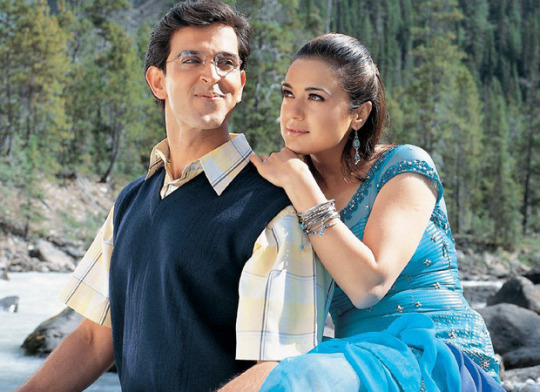
Even though fans have watched all of these videos numerous times and they are all streaming, they all received a tremendous response. And now, yet another movie will make an attempt at this. This Friday, August 4, is the rerelease date for the big-screen version of Koi Mil Gaya (2003).
The re-release will take place as part of the movie's 20th anniversary celebrations, according to a report in Hindustan Times. On August 8, 2003, the Hrithik Roshan and Preity Zinta movie was released. Then, 450 screens were used for the release. Meanwhile, the tight release for the re-release will occur in 30 cities. The prints could, however, go up based on demand, as it did in the case of Jab We Met earlier this year.
In the film Koi Mil Gaya, which was directed by Rakesh Roshan, Rohit (Hrithik Roshan), a young boy with developmental delays, falls in love with Nisha (Preity Zinta). He does, however, conceal a sweet extraterrestrial named Jadoo. The kind alien gives Rohit his power, who then gives it to his son Krrish (Hrithik Roshan). The makers of the follow-up, Krrish (2006), concentrated on Krrish's tale, his romance with Priya (Priyanka Chopra), and his confrontation with the frightening Dr. Siddhant Arya (Naseeruddin Shah), who had imprisoned his father for nearly 20 years. Krrish's box office performance inspired Rakesh Roshan to direct Krrish 3 in 2013. It was the story of Krrish against Kaal (Vivek Oberoi), a greater evil.
Krrish 4 is currently being made by Rakesh Roshan. He said he wants to take it on floors in 2024 in a recent interview. In honour of his birthday in 2022, Bollywood Hungama held a private interview with the renowned director. Upon being questioned about Krrish 4, he responded, "My scripting is almost done. It’s a big-budget film. The challenge for me is that in today’s day and age, people are aware of and watch superhero films from all over the world. These superhero films are made on very big budgets. And we don’t have such big budgets. So we have to make superhero films with very strong content and with newer ideas to come at par with the big-budget superhero movies. Meanwhile, Hollywood films are released all over the world. Our films are released in India and certain overseas territories with a huge South Asian diaspora and hence our box office potential is limited as compared to Hollywood. So, I am just waiting for the right time when the audiences would start flocking to the cinemas once again in big numbers.”
Get Latest Bollywood News only on Bollywood Hungama.
#news#bollywood hungama#bollywood#dailybollywoodqueens#bollywood latest news#bollywood gossip#bollywood hot#bollywood movies#bollywood news#koi mil gaya#hritik roshan#preity zinta#hrx#theaters#indian cinema#nostalgia#early 2000s
0 notes
Text
CHRISTOPHER NOLAN AND THE QUEST TO UNDERSTAND
This post, the first of a three part series, examines the work of film director Christopher Nolan. TENET was Christopher Nolan’s eleventh feature film, released to cinemas on the reopening of theatres after the pandemic restrictions were lifted in the US. Like other Nolan films – but even more so – it left many audiences scratching their heads with its very challenging interpretation of our…

View On WordPress
0 notes